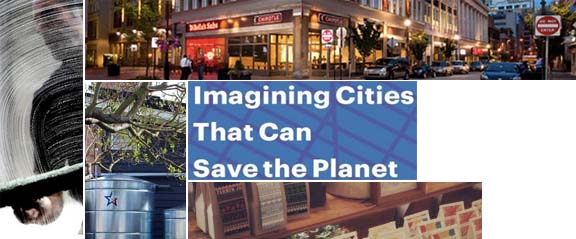 We read a lot of blogs from design and planning firms. When we surveyed the A/E industry in 2011, only 16% of our respondents were blogging. This number has certainly gone up, but more importantly, so has the quality. The blogs that consistently post interesting content bring readers back for more. These contribute new ideas and perspectives to the public, and on a broader level, they add to the laypersons’ understanding of the related professions’ role in our communities and society as a whole.
Many firms still don’t see the value of blogging and I hope we’ll see more converts to this form of communication in 2013. Blogs are more than an outlet for project descriptions and photos. They help your public audiences get a better sense of what your firm is about and the quality of ideas that you’ll bring to the table. When the practice of blogging is interwoven into the firm’s routine of work, the blog quickly becomes a collection of relevant content on topics that vary as much as the personalities within the firm itself. This content is also immensely valuable to search engines which favor newly published content – making it easier for outsiders who are looking for information on the topics covered in your blog to find your post. These encounters can the beginning of new relationships and opportunities.
We read a lot of blogs from design and planning firms. When we surveyed the A/E industry in 2011, only 16% of our respondents were blogging. This number has certainly gone up, but more importantly, so has the quality. The blogs that consistently post interesting content bring readers back for more. These contribute new ideas and perspectives to the public, and on a broader level, they add to the laypersons’ understanding of the related professions’ role in our communities and society as a whole.
Many firms still don’t see the value of blogging and I hope we’ll see more converts to this form of communication in 2013. Blogs are more than an outlet for project descriptions and photos. They help your public audiences get a better sense of what your firm is about and the quality of ideas that you’ll bring to the table. When the practice of blogging is interwoven into the firm’s routine of work, the blog quickly becomes a collection of relevant content on topics that vary as much as the personalities within the firm itself. This content is also immensely valuable to search engines which favor newly published content – making it easier for outsiders who are looking for information on the topics covered in your blog to find your post. These encounters can the beginning of new relationships and opportunities.
We want to encourage firms to use blogs effectively. Since this April, we’ve published a roundup of our favorite posts for the preceding week. Over the course of this ritual we’ve compiled a long list of firms that are blogging well. Consistently, these blogs:
- Have relevant content that’s innovative and fresh and goes beyond a project. Many firms will blog about new projects or wins and describe the project like a project sheet. Good blogs go beyond the project, looking at it from a deeper or philosophical perspective and provide original or thought provoking commentary.
- Go beyond what the traditional media have always done, which is report the news.
- Share ideas that aren’t represented by the firm, but by the people who work there.
- Generate reactions. People who read these blogs are talking about its content, and share it with their connections on social networks like Facebook and Twitter.
The following are the top 12 design and planning firm blogs for 2012 (listed alphabetically).
Array Healthcare blog
Healthcare design
http://www.array-architects.com/thoughts/
BNIM
Architecture firm with a focus on sustainable architecture.
http://www.bnim.com/press/blogs
Build LLC
The Dogrun – Lake Flato
(A place to share ideas)
http://www.lakeflatodogrun.com/
Gensleron.com
Three categories: Work, Cities and Lifestyle
HDR Architecture
http://blink.hdrinc.com/why-blink
HOK Life
Opinions expressed in this blog are the personal opinions of the original authors, not those of HOK.
LPA Blog
Olin http://www.theolinstudio.com/
Perkowitz + Ruth
http://www.studio-111blog.com/
(We love their short, but interesting, posts)
Perkins + Will
(Revamped and redesigned)
SWA Group

 Garff harvests rain. Reuse in Pittsburgh. Could cities save the world? Art opening in San Diego. Holiday pop-ups in Sydney.
Garff harvests rain. Reuse in Pittsburgh. Could cities save the world? Art opening in San Diego. Holiday pop-ups in Sydney.
 Trust and Knowledge Management. Sustainable Campus Model. Design for Healthier Cities. Uncertainty in Design.
Trust and Knowledge Management. Sustainable Campus Model. Design for Healthier Cities. Uncertainty in Design.
 Preserving and maintaining Wright. An app for ecological urbanism. Soaking it up in Philly. Balancing design and value.
Preserving and maintaining Wright. An app for ecological urbanism. Soaking it up in Philly. Balancing design and value.

 Palo Alto architecture history. Gensler on re-imagining department stores. Placemakers on urban happiness. Twelve year-old preservationist. Disaster and Community Capacity.
Palo Alto architecture history. Gensler on re-imagining department stores. Placemakers on urban happiness. Twelve year-old preservationist. Disaster and Community Capacity.